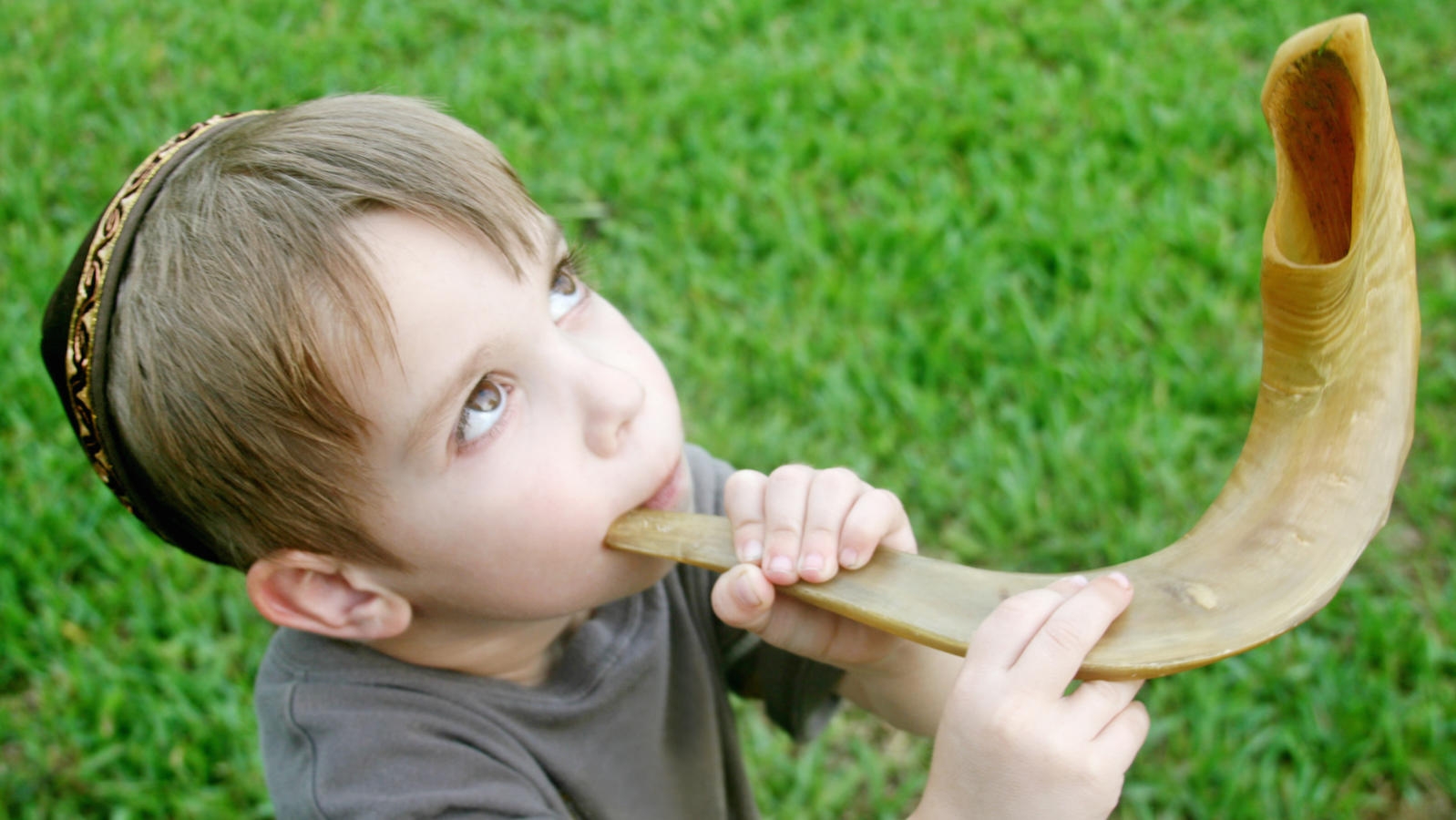For most adults, the central experience of Yom Kippur is fasting. By abstaining from food and drink, we exercise control over our bodies and do not give in to our most basic impulses. This makes it pretty easy to feel the “affliction” that the Torah mandates. But parents sometimes find it difficult to include children in the holiday observances, since anyone under the age of 13 is not required to fast.
When is Yom Kippur 2018? Click here to find out!
Here are some ways you can help your children have a meaningful Yom Kippur by teaching them disciplined, controlled behavior, as well as the meanings behind the rituals. For more on Jewish parenting, visit our partner site Kveller.
Fasting for Those Under 13
Children can develop a sense of what fasting symbolizes if they are involved in their parents’ or older siblings’ fasting experience. The seudah mafseket (pre-fast meal), as well as the break-fast meal, should be a special gathering for the whole family–fasters and non-fasters together.
With your help, My Jewish Learning can provide endless opportunities for learning, connection and discovery.
During Yom Kippur, you can share your feelings about fasting with your children. If you’re not feeling well, your kids might surprise you with how sympathetic they are, and how helpful they can be. Children nearing the age of 13 can fast a few hours to prepare for their forthcoming adult responsibilities.
You can have your children eat on Yom Kippur together with elderly or sick people who are also not fasting. This way, meals are likely to be eaten in a holiday spirit, complete with blessings before and after. Those who are not fasting should make Kiddush over grape juice or wine to sanctify the day, and add a special line in Birkat Hamazon, the blessing after the meal.
Alternatives to Fasting
While fasting from food and drink may be the most well-known of the Yom Kippur rituals, there are several other opportunities for individuals of all ages to “afflict their souls” on this day. It is appropriate for children who are not fasting to still refrain from bathing and using creams or lotions.
Also, children can participate in the custom to abstain from wearing leather shoes, and it can be particularly meaningful to them if you explain why.
Rabbi Moses Isserles pointed out how this practice enforces compassion for all living creatures: “How can a person put on shoes, a piece of clothing for which it is necessary to kill a living thing, on Yom Kippur, which is a day of grace and compassion, when it is written ‘His tender mercies are over all His works’?” (Psalms 145:9).
Use the days and weeks leading up to Yom Kippur to take your child shopping for a modest pair of shoes for the occasion: canvas sneakers, plastic sandals, or something simple from a local thrift store.
The “Jewish Lent”
On Yom Kippur, you can also encourage children to give up some basic comforts, such as a favorite toy, a special hair accessory, a particular game, or even an outdoor activity. The important thing is that your child, with the assistance and support of an adult, takes time to choose a specific way to abstain. Feel free to call this act “fasting from” — for instance, “fasting from soccer” or “fasting from Liza the bunny.”
If appropriate, you can discuss this deprivation at your pre-fast meal (“What will be challenging for you about 25 hours without soccer?”), and then again at your break-fast, when the deprivation is all over (“What thoughts came to mind when you thought about how much you missed Liza?”).
During Services
Depending on your local community, you may or may not have age-appropriate services for children. If your children are sitting through services mainly geared toward adults, it can be helpful to have a conversation to help them connect to the meaning of the day.
For example, you might discuss how Yom Kippur is a day for personal and communal atonement. This word, which might be unfamiliar to children, can be broken up into three words: “at,” “one,” and “-ment.” Ask your kids: what does it mean for a person to be “at one” with himself or herself? What would it take for our community to be at one with ourselves? What about with others?
However you choose to connect your children to the rituals of this holy day, keep in mind that though they may not yet be mature enough to express it, children are spiritual beings. Giving them an opportunity to sit and listen to the sounds of the service, and explaining to them the adult experiences of the day, can provide children with a chance to reflect and connect. Indeed, just by taking a few simple steps to translate for your children the complicated symbolism and meaning behind your rituals, you have the power to enhance your own personal connection to the holiday.
Torah
Pronunced: TORE-uh, Origin: Hebrew, the Five Books of Moses.
Yom Kippur
Pronounced: yohm KIPP-er, also yohm kee-PORE, Origin: Hebrew, The Day of Atonement, the holiest day on the Jewish calendar and, with Rosh Hashanah, one of the High Holidays.



